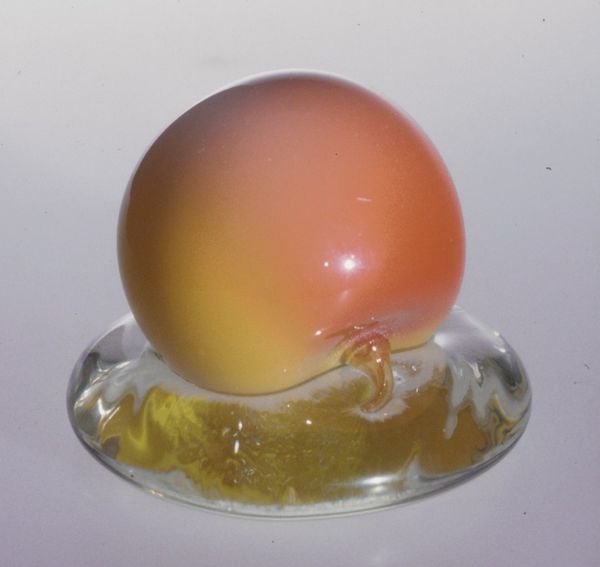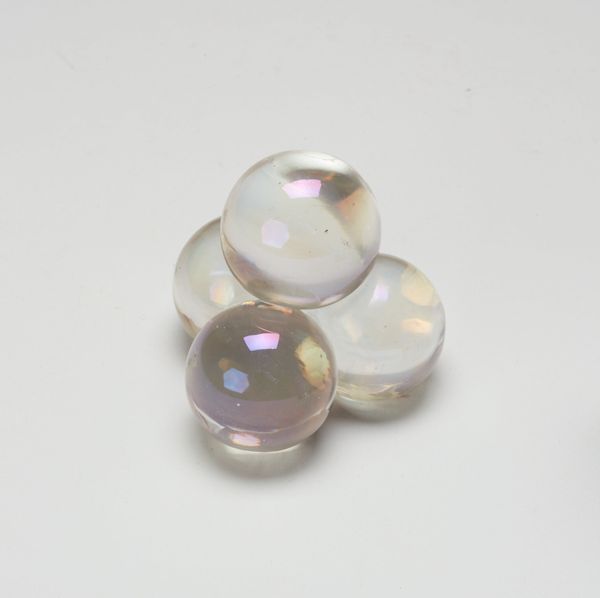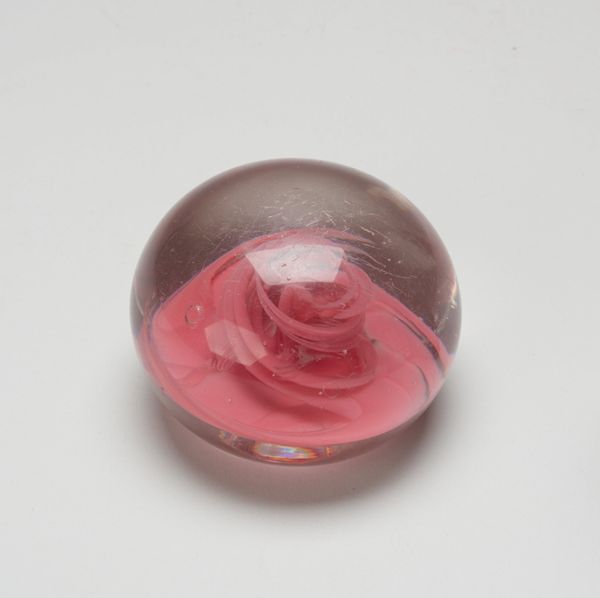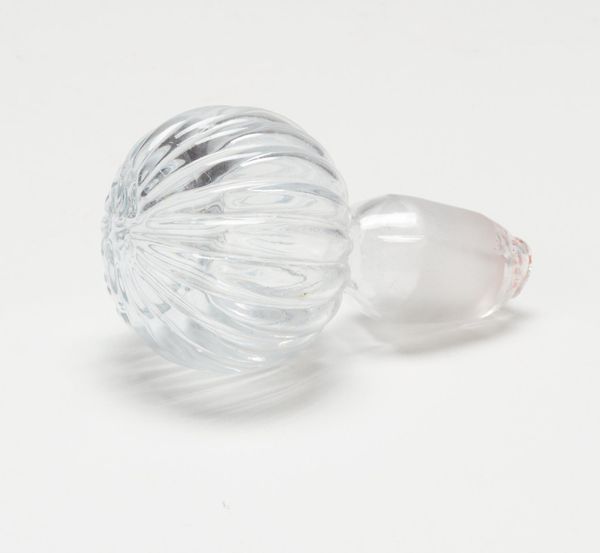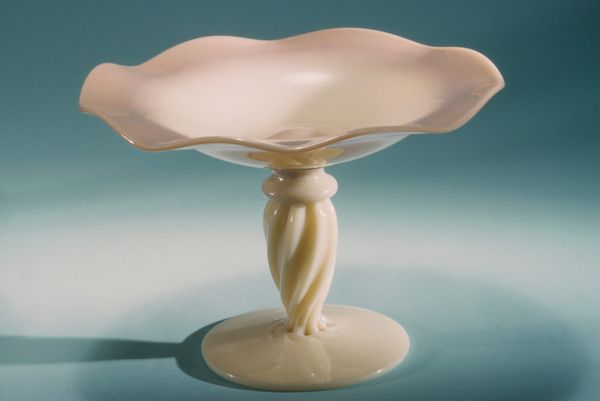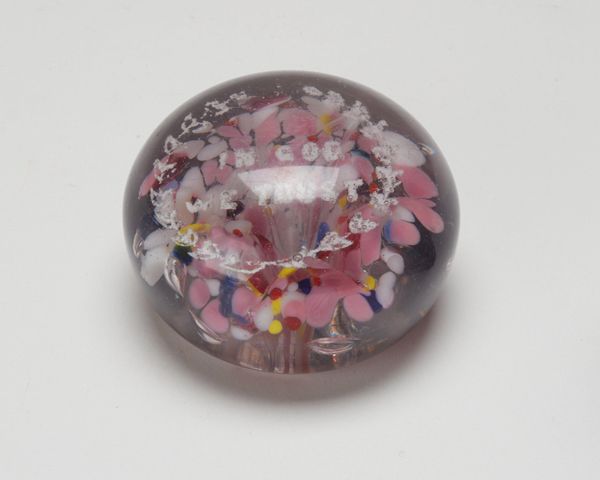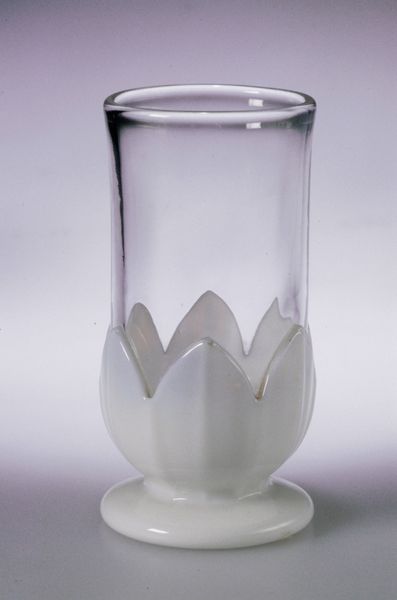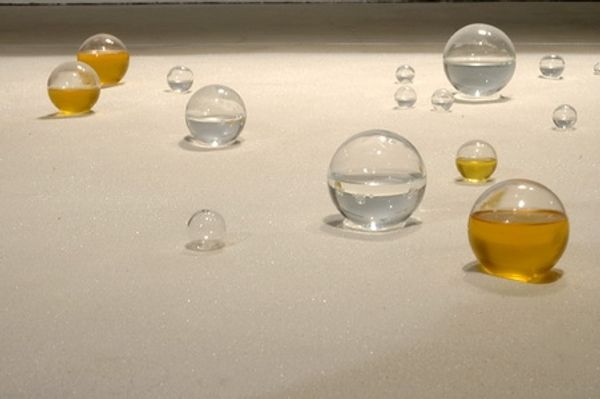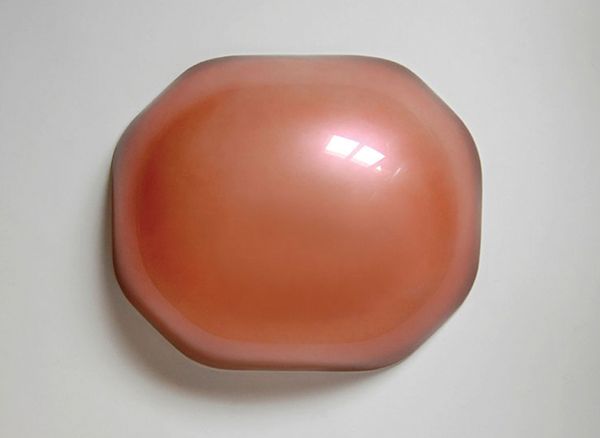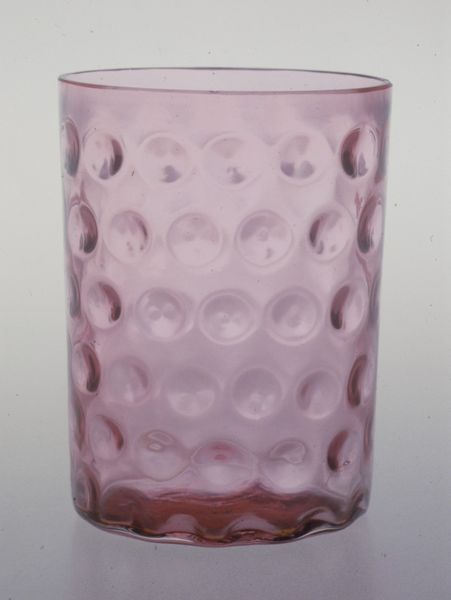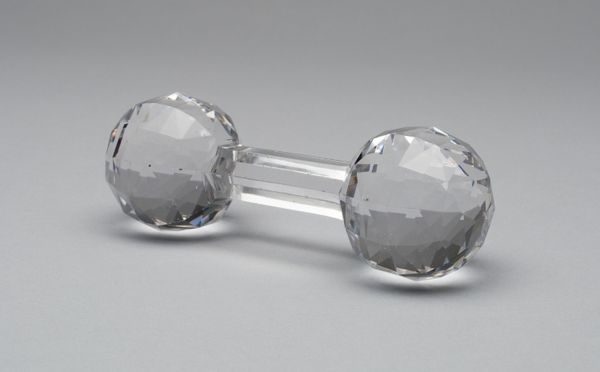
glass
#
gouache
#
water colours
#
glass
Dimensions: H. 5/8 in. (1.6 cm); Diam. 7/8 in. (2.2 cm)
Copyright: Public Domain
Editor: Here we have "Knob," crafted from glass by Reading Artistic Glass Works between 1884 and 1886. It's currently housed at the Met. I'm struck by the juxtaposition of the soft, almost organic forms and the hard, manufactured material. What do you make of it? Curator: Well, let's consider the period. Late 19th century - we're smack-dab in the Victorian era, with its fascination with both industrial innovation and a romanticized view of the natural world. Glass production was becoming increasingly sophisticated. I see this piece as an interesting intersection of industry and artistry. Editor: So, you're suggesting it reflects broader cultural trends of the time? Curator: Precisely. These "knobs," though functional, also served a decorative purpose. Mass-produced, perhaps, but still imbued with an aesthetic sensibility intended for a consuming public with rapidly changing tastes and increasingly designed interiors. Editor: It's funny, I hadn't really considered the idea of interior design as a driving force in the production of even something as simple as a doorknob! Curator: Think about the architecture of the era, too. Were these knobs likely for use in more humble homes, or were they destined for grander settings? How does the glass reflect light and interact with the colors of the interior? Its placement changes its significance entirely. Editor: That makes so much sense! It shifts my understanding completely, from a simple object to something embedded in a whole social and design context. Curator: Exactly. It makes you question the hierarchy we often impose between art and everyday objects. Editor: I'll never look at a doorknob the same way again. Thank you!
Comments
No comments
Be the first to comment and join the conversation on the ultimate creative platform.

